I'm looking at a British schematic from 1960 and the diode symbols all have half-arrowheads. Was this a standard diode symbol or does this indicate something special about the diodes?
The symbol looks somewhat like a Shockley 4-layer diode, but from the circuit, the diodes seem to be normal diodes. This post discusses a completely different strange diode symbol.
Edit: the half-diodes also appear on the cover of this vintage Italian book:


